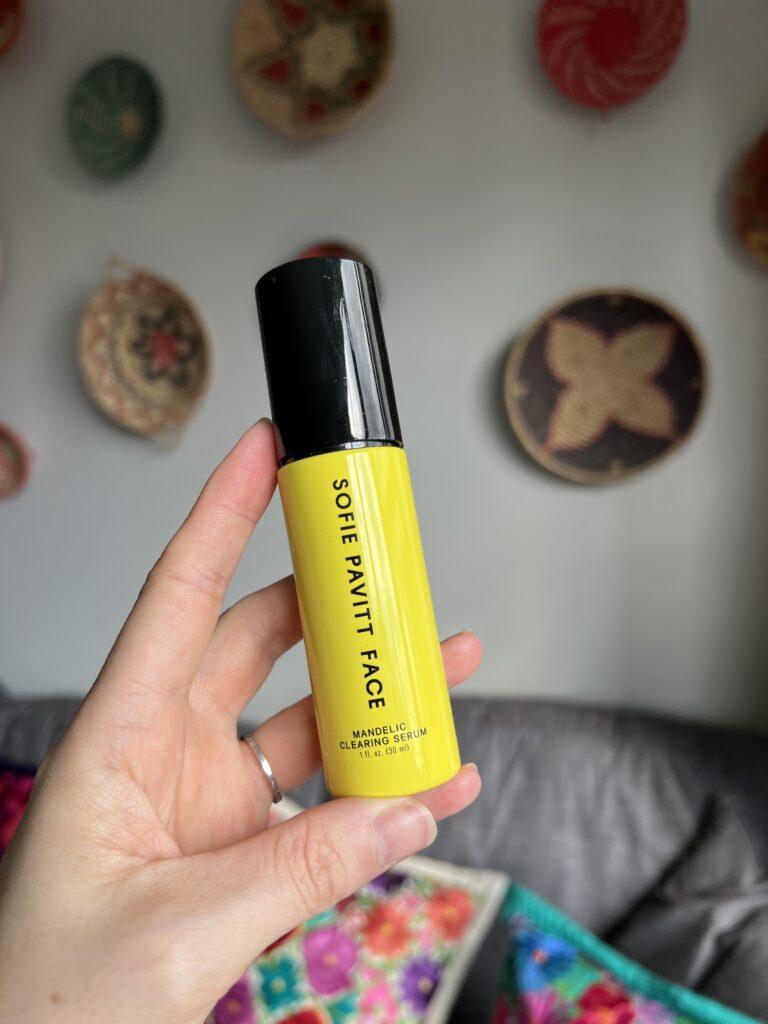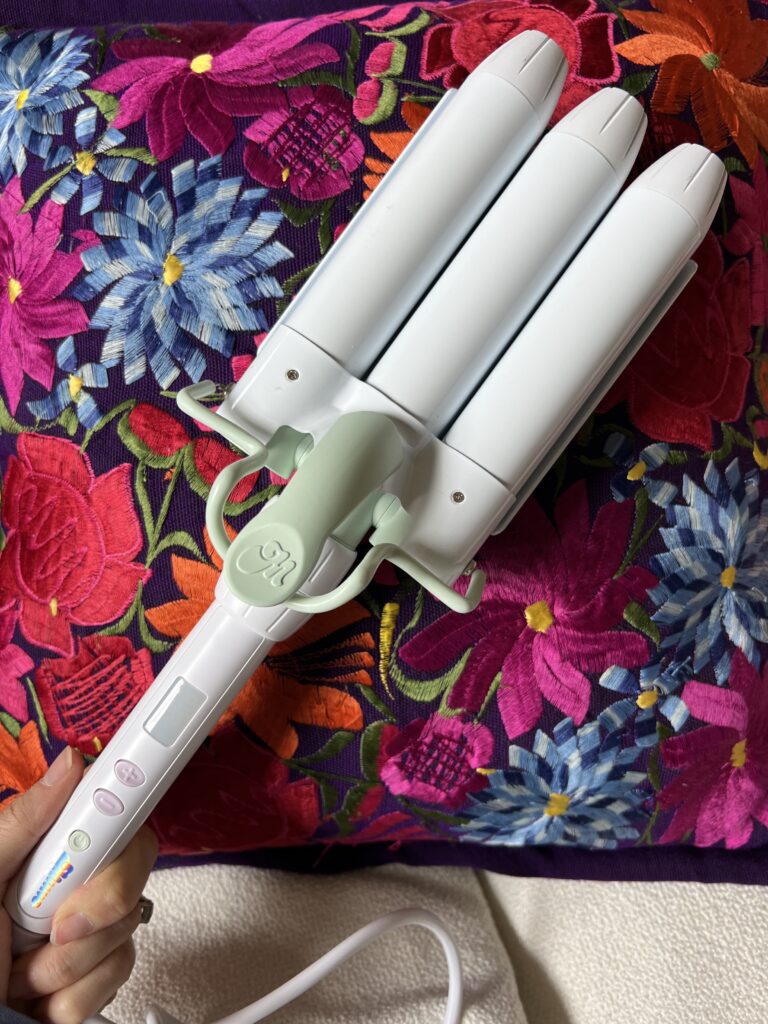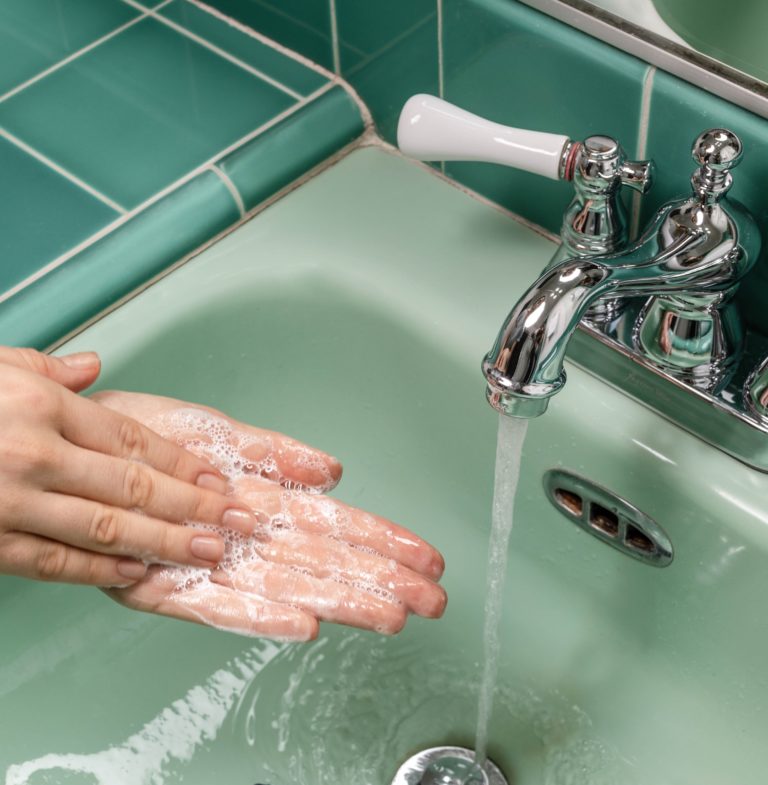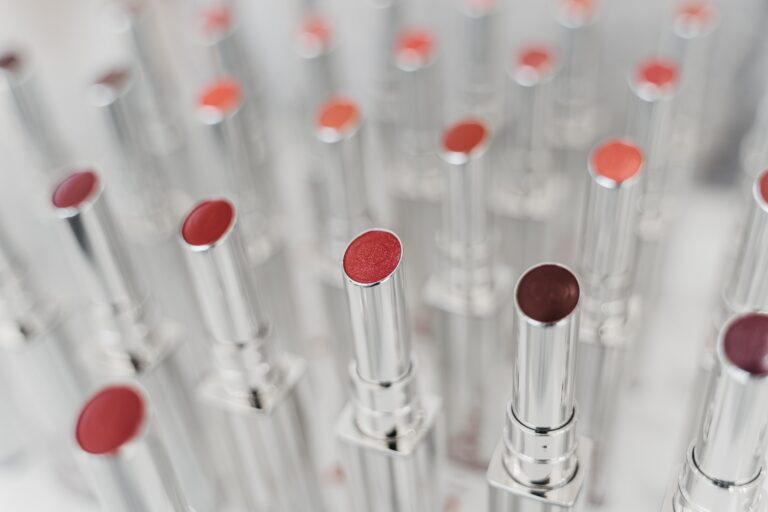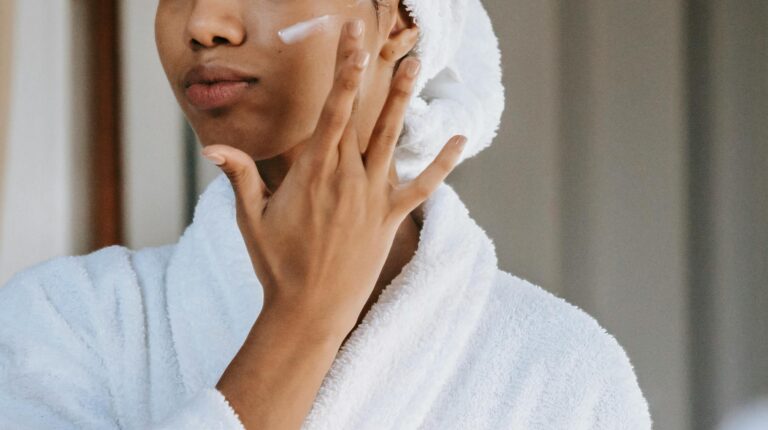Does Exfoliating Help With Acne?
Answering the question, “does exfoliating help with acne?” feels like a controversial topic to cover, to be honest. But, based on my many years as a beauty editor/writer, as well as my 1,678 years dealing with and experiencing acne, I am going to try and tackle this subject the best that I can.
That being said, please keep in mind that I am not a dermatologist and that you should always consult your derm before drastically changing up your skincare routine.
So…let’s get into it. I used to be really scared of exfoliation. Especially after a bad chemical peels experience I had many years ago. I have dry skin and acne. I always thought that drying out your skin further was going to make your skin overproduce oil, resulting in more acne.
Ever since I met Sofie Pavitt and tried out her Mandelic Serum, my thoughts around exfoliation and acne have changed a lot. First off, it’s important to note that there are two types of exfoliation—there’s chemical and physical exfoliation. Chemical exfoliants use different types of acids, like beta hydroxy acids (BHAs) and alpha hydroxy acids (AHAs), to exfoliate the outermost layer of skin. Physical exfoliation involves using physical elements (such as a wet face towel, a face scrub that features exfoliating beads, or a facial cleansing tool, like the Clarisonic—RIP).
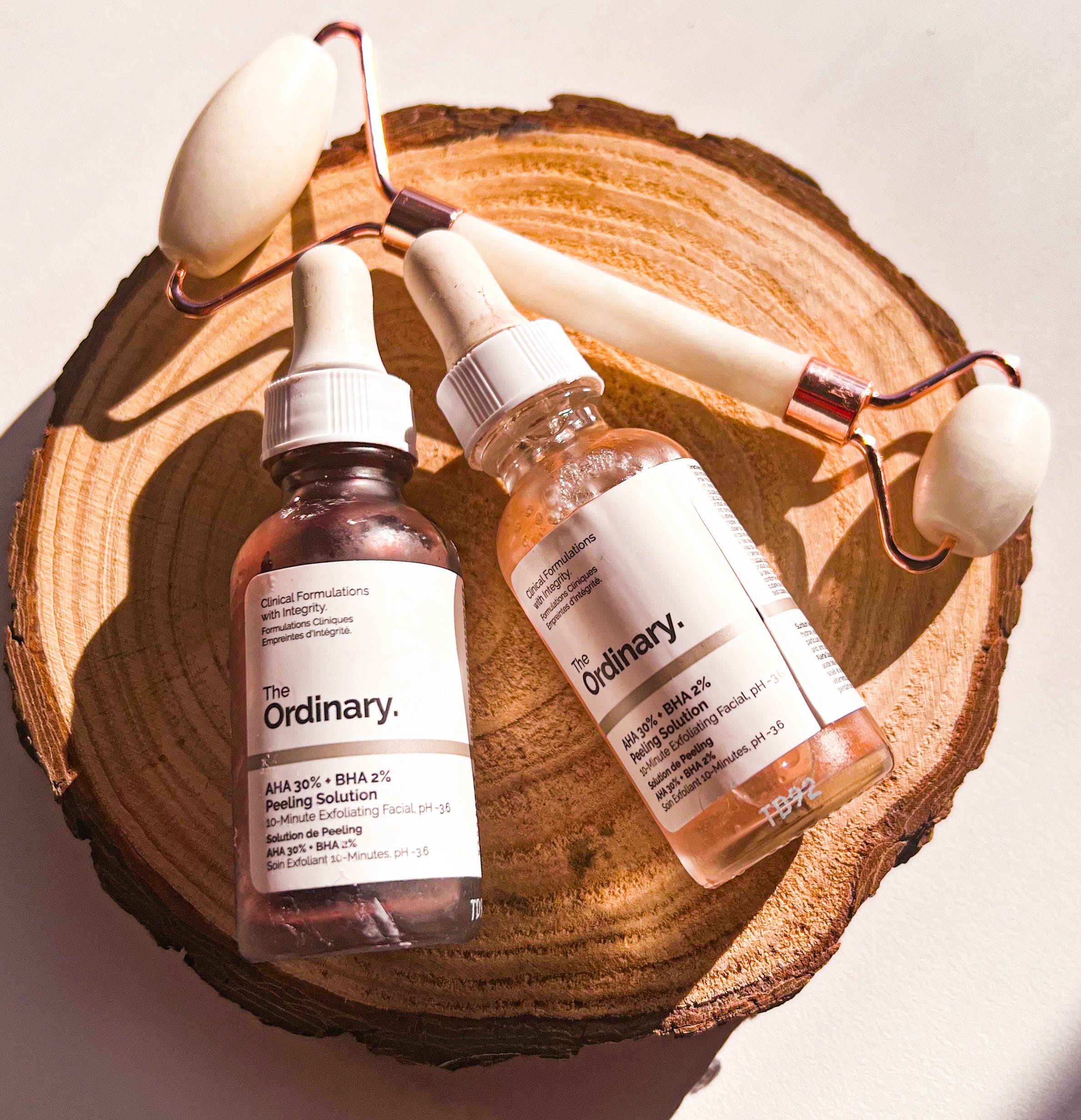
Typically, most dermatologists and estheticians will tell you that it’s not the best idea to use a physical exfoliant on acne and acne-prone skin. However, many experts are big proponents of chemical exfoliation.
Below, I’m going to cover how chemical exfoliation can help treat and prevent acne.
Does Exfoliating Help With Acne
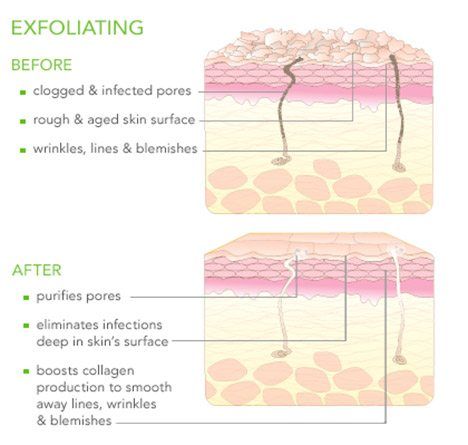
Okay, so first off, you should look at this diagram that I found online. It shows what happens before you exfoliate, and then what happens after you exfoliate. As you can see in the “Before,” there are a ton of dead skin cells at the top of the epidermis. Those dead skin cells block your pores, which will cause blackheads, whiteheads, and cystic acne to form.
In the second diagram under “After,” you will see that there are no dead skin cells to block the pores. This means that it’s a lot less likely that there will be anything around to block your pores and cause the aforementioned acne to develop.
In this Refinery29 article, Pavitt (currently dubbed the “Acne Whisperer” amongst my beauty editor circle) explains why exfoliating acne-prone skin every day is important. In it, she explains:
You’ve probably heard that daily exfoliation is going to “strip your skin” and cause it to dry out — but really, the key is how you exfoliate. “I firmly stand by daily exfoliation for acneic or breakout-prone clients,” says Pavitt. “If you’re blemish-prone, your skin is shedding and you need that daily help with your exfoliation.”
With daily exfoliation, you want something gentle, like the aforementioned mandelic acid, combined with moisturizing and soothing ingredients as well. “I formulated that mandelic acid with hyaluronic acid and panthenol,” says Pavitt. “Hyaluronic acid is really hydrating and panthenol is skin-soothing, so it helps with that barrier support.” You’re essentially sloughing away the dead skin cells that can be a precursor to acne, while ensuring that your skin stays balanced.
Considering I have really dry, really sensitive, acne-prone skin, I knew it was important for me to use a super gentle acid. Mandelic acid has been my Holy Grail acid over the last year. I highly, highly suggest others with acne-prone skin try out mandelic acid for a month and see how your skin fares.
Other acids, such as salicylic acid, benzoyl peroxide, glycolic acid, azelaic acid, and kojic acid might just be too aggressive for your acne-prone skin to tolerate. Lactic acid is another type of acid that’s more on the gentle side. But I’ve found that mandelic acid works best for me.
Next up, we’re diving into how, exactly, you should exfoliate with acids for acne-free skin.
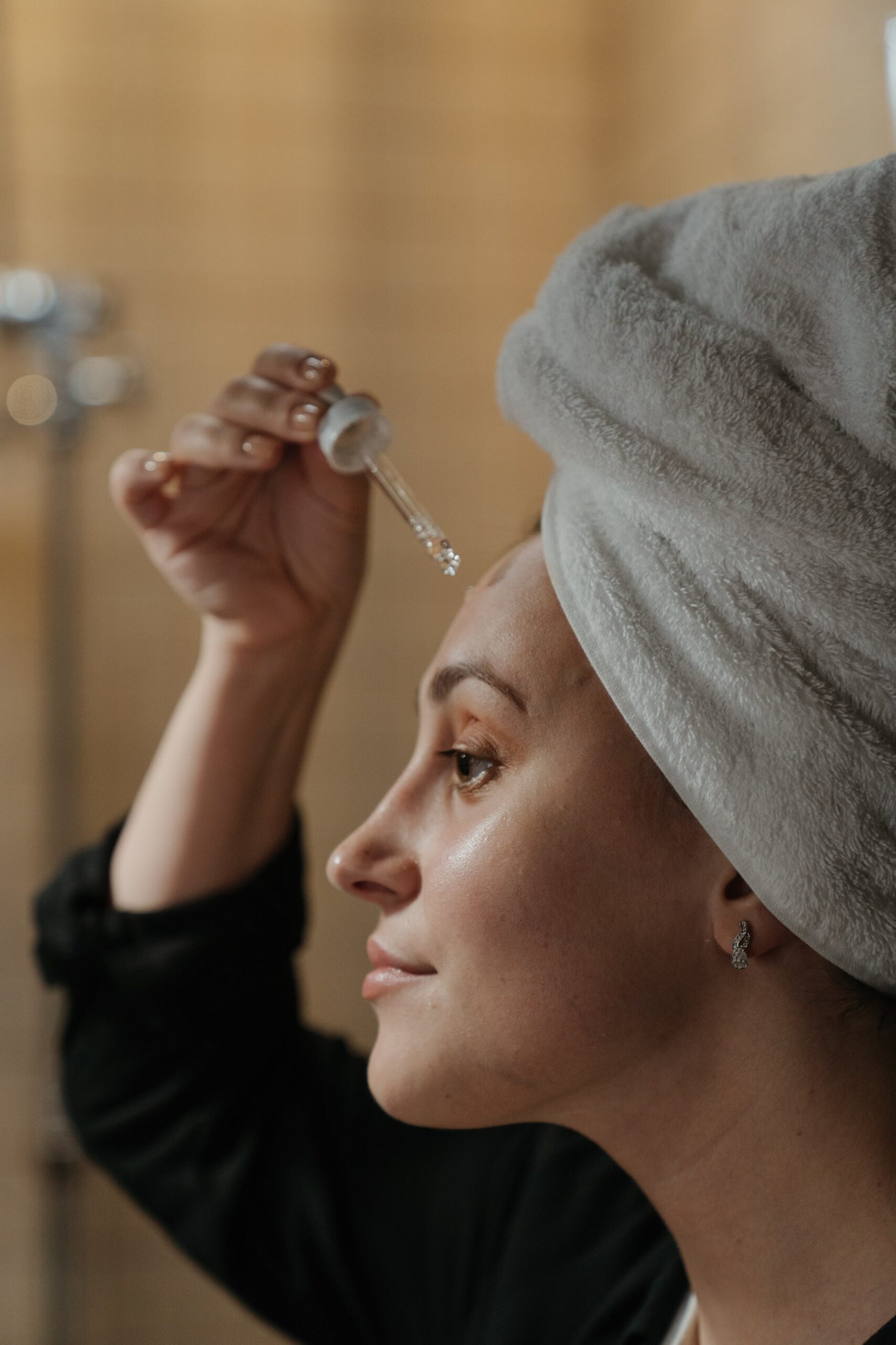
How To Exfoliate With Acne
How to choose the right products
Choosing the right exfoliation products is key. Like I mentioned previously, you don’t really want to reach for a physical face scrub if you have acne. This will most likely cause more issues. Instead, you want to opt for chemical exfoliants for acne-prone skin. I would recommend choosing a chemical exfoliant that has a gentle acid that you can use easily every day, without irritation.
Look for products that contain mandelic acid. Other options are products with lactic acid, salicylic acid, benzoyl peroxide, or glycolic acid. However, these might be too strong to use every day. My suggestion would be to start with mandelic acid and see how your skin responds to it after a month of regular use.
How often to exfoliate with acne
If you use a low percentage of mandelic acid, I think you’d be safe to use it every day. For other liquid exfoliants that contain a bit more aggressive acids, I would probably use it 2-3 times per week to help you unclog pores. Then, spend the other nights focusing on hydrating your skin and building your skin barrier.
How to exfoliate with active breakouts
You want to be extra gentle if you are experiencing active breakouts. I would use a mandelic serum maybe 4-5 nights per week and see how your skin responds. Don’t ever use a physical exfoliant on active breakouts, as that could cause long-term scarring, hyperpigmentation, and post-inflammatory erythema.
What to do after exfoliation
Personally, I like to hydrate my skin as much as possible after I exfoliate. Usually, I will exfoliate my skin at night. First I will use a gentle cleanser, then spritz a rose toner, then apply my mandelic serum. Once that has dried down, I will apply a hydrating serum on top of that, and then a moisturizer to seal everything in.
Best Exfoliator For Acne Prone Skin
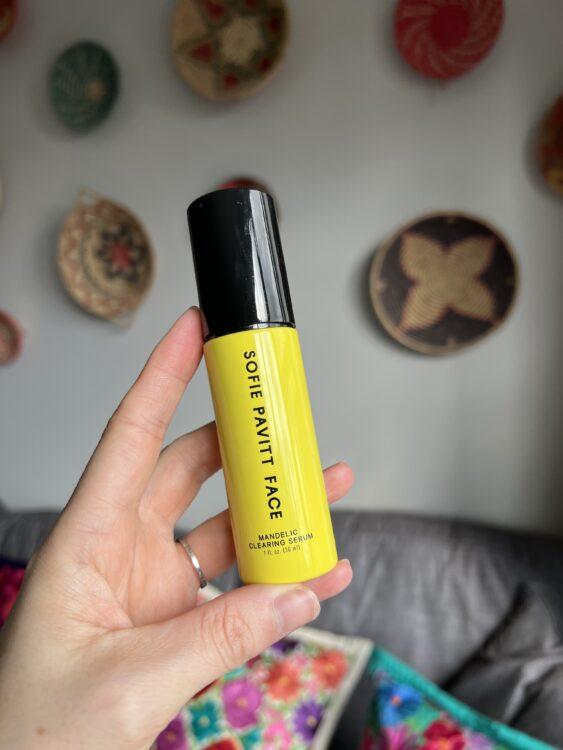
Sofie Pavitt Mandelic Clearing Serum
I’ve gone through about four or five bottles of this stuff in the last year or so. It is my Holy Grail. My ride-or-die. My desert island must-have. I use this almost every night and have little to no irritation from it. It contains mandelic acid, hyaluronic acid, and panthenol to gently exfoliate the skin while hydrating and calming, too. I’m obsessed and highly recommend it to anyone with sensitive, acne-prone skin. I recommend using it nightly to really start seeing results after about four weeks.
Available at Soko Glam ($54)
Face Reality 8% L-Mandelic Serum
I haven’t tried this one yet, but it’s an award-winning mandelic serum that works well to target acne. It also contains lactic acid, witch hazel, and hyaluronic acid. I think this is probably a bit stronger than the Sofie Pavitt Mandelic Clearing Serum. The annoying thing about this pick is that you can only get it from a Face Reality Acne Expert (so an esthetician in your area who carries Face Reality skincare products).
Only Available from a Face Reality Acne Expert
RELATED: Is Hyaluronic Acid Good for Acne?
Naturium Mandelic Topical Acid 12%
This is another serum that I haven’t tried, but its star ingredient is mandelic acid. At 12% mandelic acid, this is a pretty strong serum that shouldn’t be used nightly if you have really sensitive skin. It also contains natural fruit acids for extra exfoliation, as well as niacinamide to calm your skin.
Available at Amazon ($20) | Also available at Target
The INKEY List Mandelic Acid Treatment
I have this in my bathroom cabinet. I like to use it whenever I run out of my Sofie Pavitt Face Mandelic Clearing Serum. This is kind of like a gel that can be applied right before your moisturizer. It contains 10% mandelic acid, 2% hydrating glycerin, and 0.1% encapsulated retinol to help fade dark spots and discoloration. I like to use this as a spot treatment, rather than an all-over serum—I think it’s too thick to be considered a serum.
Available at Amazon ($13) | Also available at Sephora
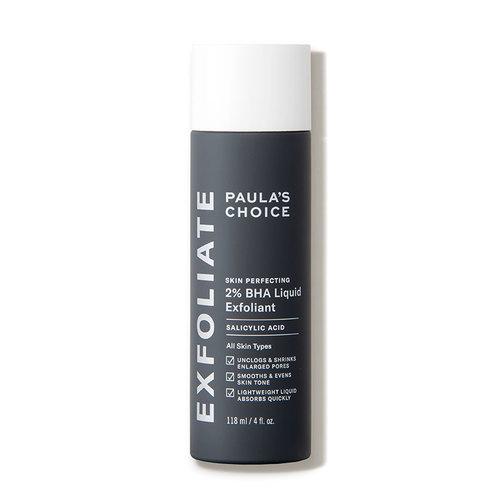
Paula’s Choice Skin Perfecting 2% BHA Liquid Exfoliant
This is Paula’s Choice best-selling product. It contains 2% salicylic acid, and millions of people swear by it to keep their skin clear and blemish-free. I have found that it’s a little bit too drying for my skin. However, I wanted to include it on the list because I think it’s definitely one worth considering if you have acne-prone skin that isn’t super sensitive or dry. It’s great for oily, acne-prone skin types, and targets the deeper layers of the skin. It can also help treat acne scars, too.
Available on Amazon ($35) | Also available on Sephora
Paula’s Choice 6% Mandelic Acid + 2% Lactic Acid Liquid Exfoliant
This is a new Paula’s Choice exfoliant that I am dying to get my hands on! As the title suggests, it contains 6% mandelic acid and 2% lactic acid, which is another acid I mentioned earlier that’s gentle and could help reduce acne. This pick promises to target sun damage, fine lines, and fullness, support your skin barrier, and boost skin cell turnover.
Available at Paula’s Choice ($37)
Sunday Riley Good Genes All-In-One AHA Lactic Acid Treatment
This is a best-seller from Sunday Riley. I don’t personally use this pick, but I have a good friend who also suffers from acne who has used this treatment religiously for years, and swears by it to keep her clear. It contains lactic acid to gently exfoliate your skin and remove dead skin cells over time. It also works to hydrate your skin, smooth texture, and target fine lines and wrinkles, too.
Available at Amazon ($85) | Also available at Sephora
Well, I hoped this helped answer any questions like, “does exfoliating help with acne?” If you’ve tried any of these products, or have any other acne exfoliants you love and would recommend, please leave a comment!


